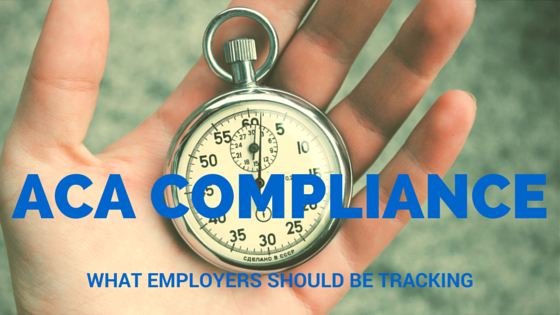
Affordable Care Act (ACA) tracking is a must for employers, but what are the key components that go into completing the required annual IRS reports?
By understanding which elements to track—employee hours, benefits plan participation, and other information—and the best system for tracking them, you obtain the data you need to meet ACA reporting requirements and maintain your organization’s regulatory compliance.
ACA Reporting Requirements for Employers
Enacted in 2010, the Affordable Care Act offers government-subsidized health insurance coverage to the previously uninsured, covering a record 31 million people as of 2021. Besides offering coverage to the uninsured, the ACA also sets strict reporting standards for employers to ensure they are offering benefits per ACA requirements.
ACA tracking and reporting is essential to both the compliance health of your organization and its bottom line. Failure to comply with ACA requirements can carry an IRS penalty of $100 per affected individual for each day of non-compliance, plus additional penalties levied by the Department of Labor.
ACA reporting is required for employers with 50 or more employees—also called applicable large employers (ALEs). ALEs must submit an annual report, IRS Form 1094-C, detailing the benefits offered to full-time employees and their dependent children. This form can be filed through the mail or electronically.
Employers must also provide similar information to employees using IRS Form 1095-C. These two IRS forms confirm that an employer is offering affordable minimum essential health coverage (MEC) to at least 95 percent of its employees.
Items to Include in ACA Tracking
Although IRS Form 1094-C looks simple to complete at first glance, you need to draw on other information about your workforce and benefits plans to complete it accurately. To provide the information requested on Form 1094-C, you’ll need to track the following workforce information:
Total Headcount
It’s critical to keep up-to-date headcount reports you can rely on for IRS reporting. By tracking headcount throughout the year, you avoid a last-minute scramble for accurate numbers.
Employee Classification (Full-Time vs. Part-Time)
Track which employees qualify as full-time workers for each calendar month of the year. Keep in mind that employees are considered full-time by the IRS if they work 30 hours per week or 130 hours per month. Therefore, you’ll need to include both full-time employees who work the same hours every week and those who work variable schedules.
Employee Schedules and Hours
Keep a record of all employee hours and timesheets for all employees, whether or not they are eligible for benefits. The IRS offers two methods to determine which employees are full-time and eligible for benefits—either the look-back method or the stability period. When tracking employee hours, be sure to consider employee leaves and other absences—such as furloughs and layoffs—that impact the total hours worked for the year.
Employee Eligibility
Keep a record of when employees become eligible for benefits during the year. Any time an employee changes their hours, their benefits eligibility could be impacted, so be sure you’re using an integrated human capital management (HCM) system that can track schedule changes throughout the year.
Benefits Coverage
Track the months each employee had coverage under an eligible employer-sponsored plan. You’ll also need to maintain a record of each full-time employee’s share of the lowest-cost monthly premium for self-only coverage, as this will determine if your organization is offering the required MEC.
Changes in Reporting Requirements
To be sure you understand what you need to submit to the IRS and when it’s essential to stay informed about periodic changes. For example, the IRS recently announced the following reporting deadline changes for 2021:
- The deadline for providing employees with a copy of their 1095-C reporting form was extended from the usual deadline of January 31 to March 2.
- The affordability threshold (i.e., the maximum amount employers can charge for the least-expensive, self-only benefits plan, as a percentage of the employee’s household income) increased from 9.78 percent to 9.83 percent.
How an Integrated HCM System Helps with ACA Tracking
Having an accurate, up-to-date system for employee payroll, time and attendance, and benefits information is critical, as it can provide the information you need to submit IRS reports on time. To ensure you can easily access what you need for ACA reporting, you can benefit from an integrated payroll system that pulls all of your workforce data into one platform.
An integrated system syncs your employee data across payroll management, benefits administration, and scheduling, so you can generate the head count, hours, and benefits information you need to complete IRS forms 1094-C and 1095-C. Moreover, an integrated HR system with an ACA reporting module gives you access to automation and notification tools, as well as timely alerts to keep you updated about ACA regulatory changes as they occur.
Say Goodbye to the Stress of ACA Reporting
ACA tracking and compliance doesn’t have to be an annual headache, nor does it need to be a struggle to access the data you need to complete reporting requirements. ACA compliance can be a breeze with an integrated system that puts accurate, aggregated workforce data at your fingertips. For a step-by-step guide to worry-free ACA tracking and compliance, download our “ACA Compliance & Reporting Checklist.”
Originally published July 30, 2015 and updated on August 3, 2021.
This content is intended for educational purposes only and should not be considered legal advice.

